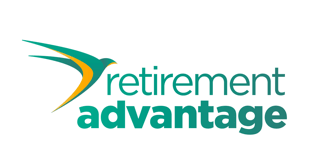When you consider the prospect of tapping into the value of your home through equity release, it’s only natural to wonder how long the process might take. While individual cases can vary, the typical equity release journey generally spans around 6-8 weeks from start to finish. This timeline ensures that every important detail is attended to, from seeking advice to the moment you have access to the released funds.
The key stages that make up this 8-week timeframe:
- Advice & Submitting Application: The first step is seeking advice from a professional to understand if equity release is the right option for you. After gathering all necessary details and ensuring that this avenue aligns with your needs, an application is submitted to the provider.
- Property Valuation: Next, a valuation of your property is conducted. This step ensures the provider understands the value of your home, which in turn determines how much equity can be released.
- Formal Mortgage Offer: Based on the valuation and your individual circumstances, the equity release provider will then present a formal mortgage offer, laying out the terms and conditions of the proposed equity release.
- Equity Release Legal Advice: Before proceeding further, you’ll need to receive legal advice about the offer. This is crucial to ensure you fully understand the implications, responsibilities, and benefits of the agreement.
- Requisitions: At this stage, any additional questions or clarifications needed either by you or by the provider will be addressed. It’s an opportunity to iron out any discrepancies and ensure both parties are on the same page.
- Completion: With all the prior steps duly addressed, the process culminates in the completion stage. This is when the agreed-upon funds are released, providing you with the equity from your home.
Embarking on the equity release journey requires careful thought and expert guidance. Being aware of the typical duration and the steps involved can help set the right expectations, making the process smoother and more transparent.
At Premier Equity Release we always aim to be upfront and frank with timeframes and advice – this helps keep your expectations realistic and gives you a crystal clear view of the process and what to expect. For our full guide on our process see our guide to how we work.
Advice & Submitting An Application
Taking the first step in the equity release process often starts with seeking professional advice and submitting the requisite application.
Here’s a more in-depth breakdown of this initial phase so you know what to expect:
The Application Form
Every equity release lender has a standard application form that prospective clients need to fill out. This form captures vital details that the lender requires to assess whether you qualify for an equity release and to what extent. While most lenders expect this form to be signed by you, the client, there are a few who only necessitate your signature later when accepting the formal mortgage offer in conjunction with your solicitor.
The Advisor’s Role and Declaration
Integral to the application is a specific declaration that the equity release advisor is mandated to sign. By affixing their signature, the advisor is attesting to a couple of crucial aspects:
- Professional Competence: The advisor confirms they’ve successfully cleared the appropriate examinations, ensuring they possess the required knowledge to guide you through the equity release process.
- Providing Advice: The signature also stands as proof that the advisor has offered you comprehensive advice about equity release, ensuring you understand its implications and benefits.
Identity Verification
The equity release advisor must confirm your identity, this is standard practice in many financial transactions to prevent fraud and ensure the security of both parties. As part of this verification process, we’ll request the following documents:
- Primary Identification: You’ll need to provide an original form of identification. This can be either your Passport, Photo Driving Licence, or Birth Certificate.
- Proof of Address: To verify your current residence, you’ll be asked to produce an original document that confirms your address. This can be a Utility Bill dated within the last three months, a Bank Statement also dated within the last three months, or your current year’s Council Tax bill.
In essence, the advice and application submission phase is structured to ensure that the equity release process begins on a solid footing, with both parties possessing all necessary information. Streamlining this phase sets the stage for a smooth progression through the subsequent stages of the equity release journey.
Who do we work with?
There are a few key providers in the Equity Release market that also work within the Equity Release Council’s guidelines. As trusted providers, we’re happy to work with all of them:










Submitting Your Application
After filling out & completing the application form, it’s ready to be forwarded to the lender. Each lender has their preferred method of receiving applications. While some lenders expect the forms to be sent via post, others accept them through email. Some even provide specialised online portals for advisors to directly upload applications.
No matter the submission method, the lender will officially confirm the receipt of your application. Following this acknowledgement, they will move onto the stage and commission a surveyor to assess the value of your property.
Desktop Property Valuation vs. Physical Property Valuation
In many instances, surveyors might conduct what’s known as a “desktop valuation”. This means they’ll assess the property’s worth without visiting it in person. For this method, you might be asked to provide digital photographs of your home, which aids the surveyor in making an informed evaluation. This was especially popular during the covid19 period, and many lenders have adopted this method full time.
However, there are times when a more hands-on approach is necessary. If a physical valuation is deemed essential, the surveyor will directly reach out to you to schedule a suitable time to visit and inspect your property.
The Physical Valuation Process
During a physical assessment, the surveyor will methodically go through each room in your house. Their primary goal is twofold:
-
- Determining Market Value: The central purpose of this visit is to ascertain the current market value of your property. This valuation becomes the foundation upon which the lender’s formal mortgage offer is built.
- Assessing Property Specifications: Beyond just the market value, the surveyor will also ensure that the property aligns with the lender’s underwriting criteria. This can include specific details like calculating the flat-roof percentage and verifying that such features adhere to the lender’s stipulations.
Duration and Reporting
The actual valuation process, when conducted physically, is relatively swift, typically taking under 30 minutes. However, post-valuation, the surveyor must compile their findings into an official report, which is then forwarded to the lender.
It’s worth noting that lenders generally expect these valuation reports to be submitted promptly. Often, surveyors are given a 48-hour window to return their detailed report after the physical inspection of your property.
In summation, the property valuation phase is a structured procedure that assures lenders of your property’s worth and its alignment with their criteria. Whether executed remotely or in person, it’s an essential step in the equity release journey.
Formal Mortgage Offer
Once the property valuation is successfully conducted and the report submitted, the next significant milestone in the equity release process is the receipt of the formal mortgage offer.
This phase demystifies the conditions under which the lender is willing to release equity from your property.
Here’s a closer examination of this pivotal step:
What Constitutes the Formal Mortgage Offer?
The formal mortgage offer is a comprehensive document drafted by the lender that provides detailed information about the terms and conditions of the proposed equity release.
It includes:
- Amount of Equity: The offer states the exact amount the lender is prepared to release based on the property’s valuation.
- Interest Rates: It will detail the interest rates applicable and any other associated costs.
- Terms and Conditions: This includes any stipulations, requirements, or clauses the lender wants the client to be aware of and adhere to.
- Repayment Structure: If there are any provisions for partial or full repayments, these will be highlighted.
Timeframe for Receiving the Offer
After the valuation report is submitted by the surveyor, lenders typically work with efficiency to draft the formal mortgage offer. In most cases, you can expect to receive this offer within approximately 48 hours.
This quick turnaround ensures the process stays on track and allows for any potential queries or concerns to be addressed promptly.
Review and Acceptance
It’s crucial for clients to thoroughly review the formal mortgage offer. It’s not just a matter of understanding the financial implications but also any terms or conditions that might have long-term consequences.
Consulting with an equity release advisor or solicitor at this juncture can be beneficial to ensure everything is clear and you fully understand.
The Road Ahead
Once the formal mortgage offer is accepted, the process moves forward to the next step of obtaining equity release legal advice and addressing any requisitions. However, the formal mortgage offer stands as a definitive agreement, cementing the terms under which the equity release will proceed.
In essence, the formal mortgage offer, though quickly delivered post-valuation, is a cornerstone in the equity release journey, setting clear expectations and terms for both the client and the lender.



